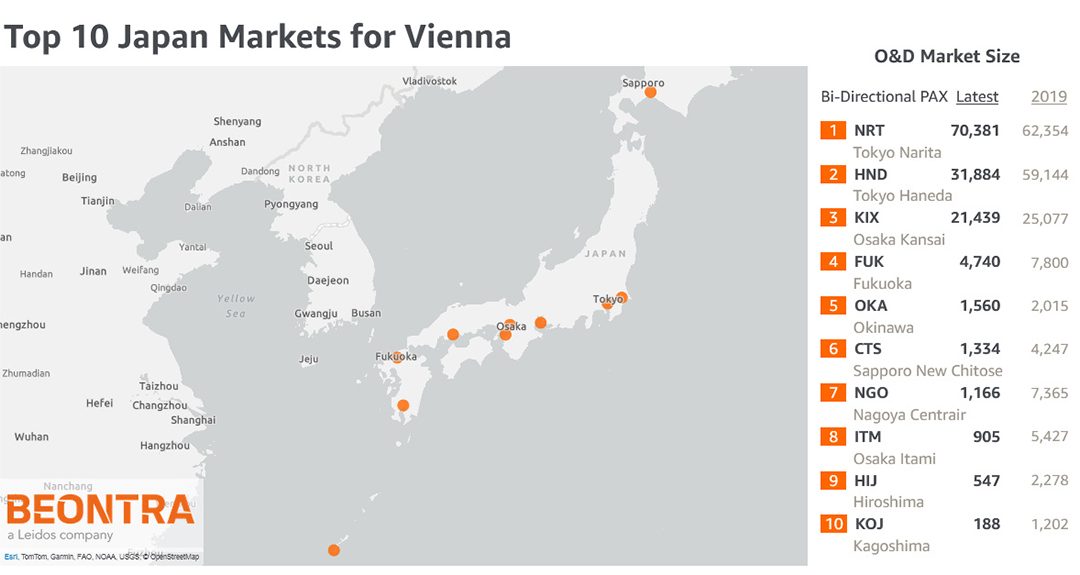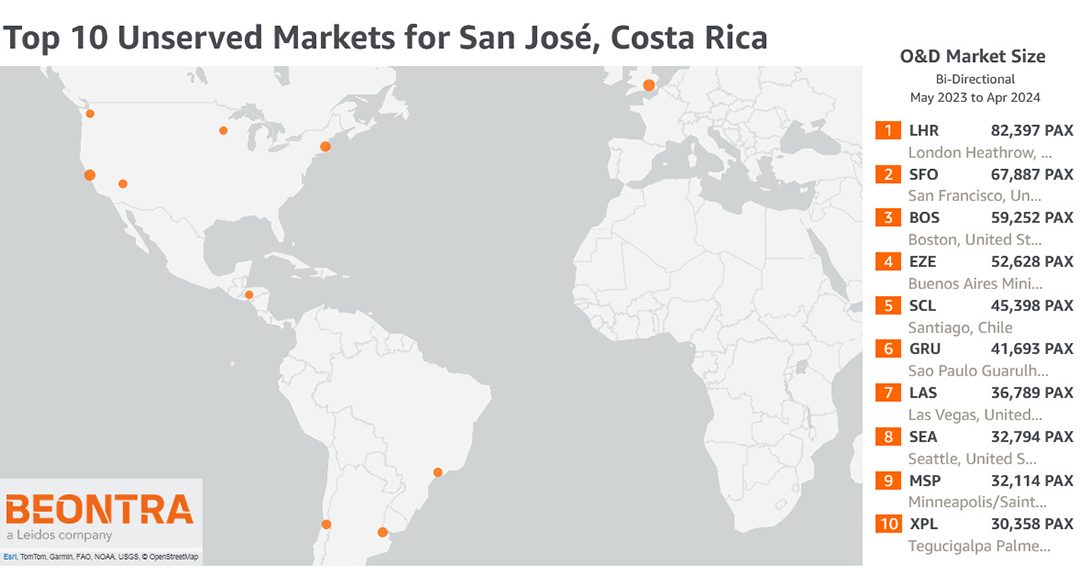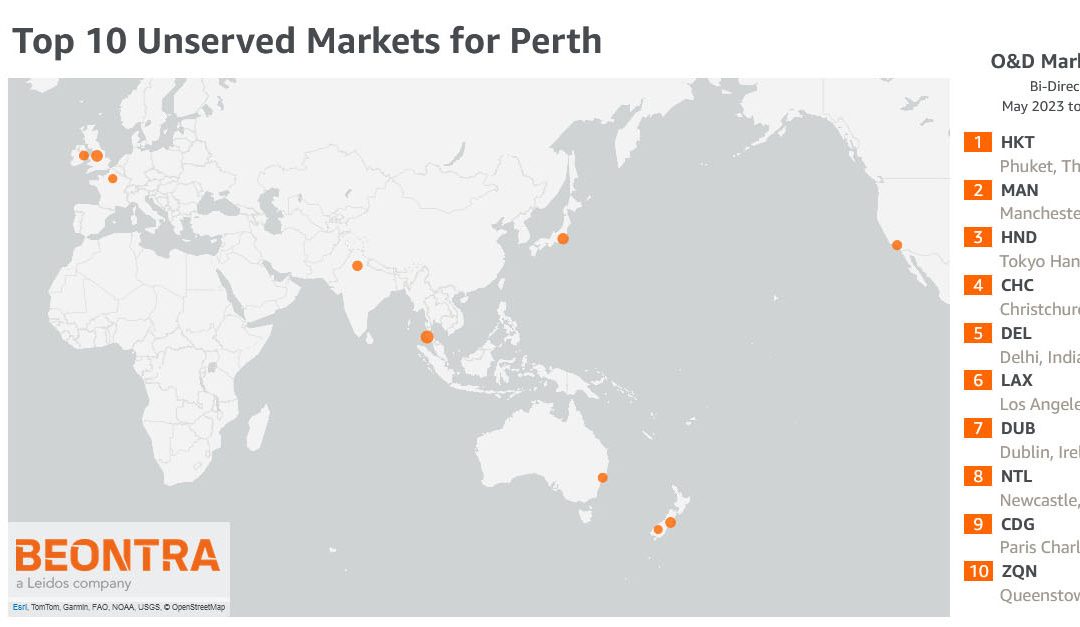
Market Insights: Vienna to Japan – A Promising Rebound Ahead! ✈️
On 2 August, All Nippon Airways resumed its flights from Vienna Airport to Tokyo Haneda after a long hiatus due to the COVID-19 pandemic. This exciting development inspired us at BEONTRA to analyze the latest O&D market size from Vienna to the top 10 destinations in Japan and to compare them to the 2019 level. 📊
Our analysis reveals that there is still significant catch-up potential for most markets. For instance, the market size from Vienna to Haneda (HND) is currently 46% below 2019 levels. However, with ANA’s capacity increase to Japan, we anticipate a swift recovery in these numbers. 📈
Meanwhile, for Vienna to Narita, where Austrian Airlines offers a seasonal non-stop service, the market size has already exceeded the 2019 level – a positive sign of recovery and growth! 🌸
BEONTRA’s Route Forecasting solution helps airlines and airports identify such opportunities for market growth and expansion. Discover how our data-driven insights can guide your route development strategies: www.beontra.com/solutions.





